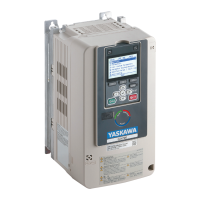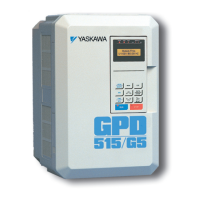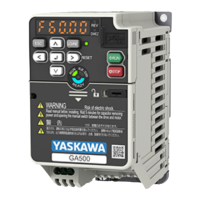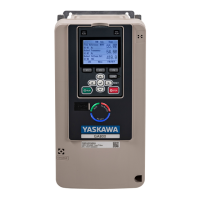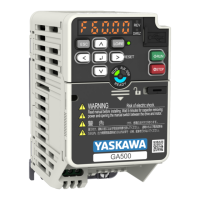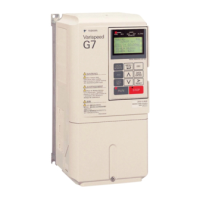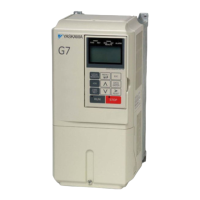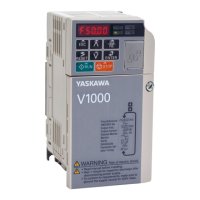6-134
Gain Adjustments at Minimum Output Frequency
Operate the motor at the minimum output frequency. Increase C5-03 (ASR proportional gain 2) to a level
where there is no oscillation. Decrease C5-04 (ASR integral time 2) to a level where there is no oscillation.
Monitor the Drive's output current and verify that it is less than 50% of the Drive rated current. If the output
current exceeds 50% of the Drive's rated current, decrease C5-03 and increase C5-04.
Gain Adjustments at Maximum Output Frequency
Operate the motor at the maximum output frequency. Increase C5-01 (ASR proportional gain 1) to a level
where there is no oscillation. Decrease C5-02 (ASR integral time 1) to a level where there is no oscillation.
Fine Adjustments
When you want even finer gain adjustment, adjust the gain while observing the speed waveform. The adjust-
ment method is the same as that for vector control.
Enable integral operation during acceleration and deceleration (by setting F1-07 to 1) when you want the
motor speed to closely follow the frequency reference during acceleration and deceleration. Reduce the setting
of C5-01 if overshooting occurs during acceleration, and reduce the setting of C5-03 and increase the setting
of C5-04 if undershooting occurs when stopping. If overshooting and undershooting cannot be eliminated by
adjusting only the gain, reduce the value of C5-05 speed control and reduce the limit of the frequency refer-
ence compensation value.
Droop Control Function
Droop control is a function that allows the user to set the amount of motor slip.
When a single load is operated with two motors (such as in a crane conveyor), a high-resistance motor is nor-
mally used. This is to use torque characteristics that exhibit proportion movements due to changes in the sec-
ondary resistor to maintain torque balance with the load and overall speed balance with the load.
If droop control is used, a high-resistance motor characteristics can be set for a general-purpose motor.
Related Parameters
Parameter
Number
Name
Description
Setting
Range
Factory
Setting
Change
during
Operation
Control Methods
Display
V/f
V/f
with
PG
Open
Loop
Vector
1
Flux
Vector
Open
Loop
Vector
2
b7-01
Droop Control
Level
Sets the speed decrease as a
percentage of motor base speed
(E1-06) when the motor is at
100% load torque. Setting of 0.0
disables droop control.
0.0
to
100.0
0.0 Yes No No No A A
Droop Quantity
b7-02
Droop Control
Delay Time
Determines the droop control
delay time in response to a load
change.
0.03
to
2.00
0.05secNoAAAAA
Droop Delay
Time
Artisan Technology Group - Quality Instrumentation ... Guaranteed | (888) 88-SOURCE | www.artisantg.com
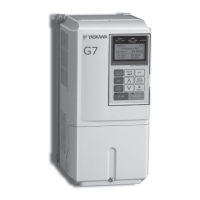
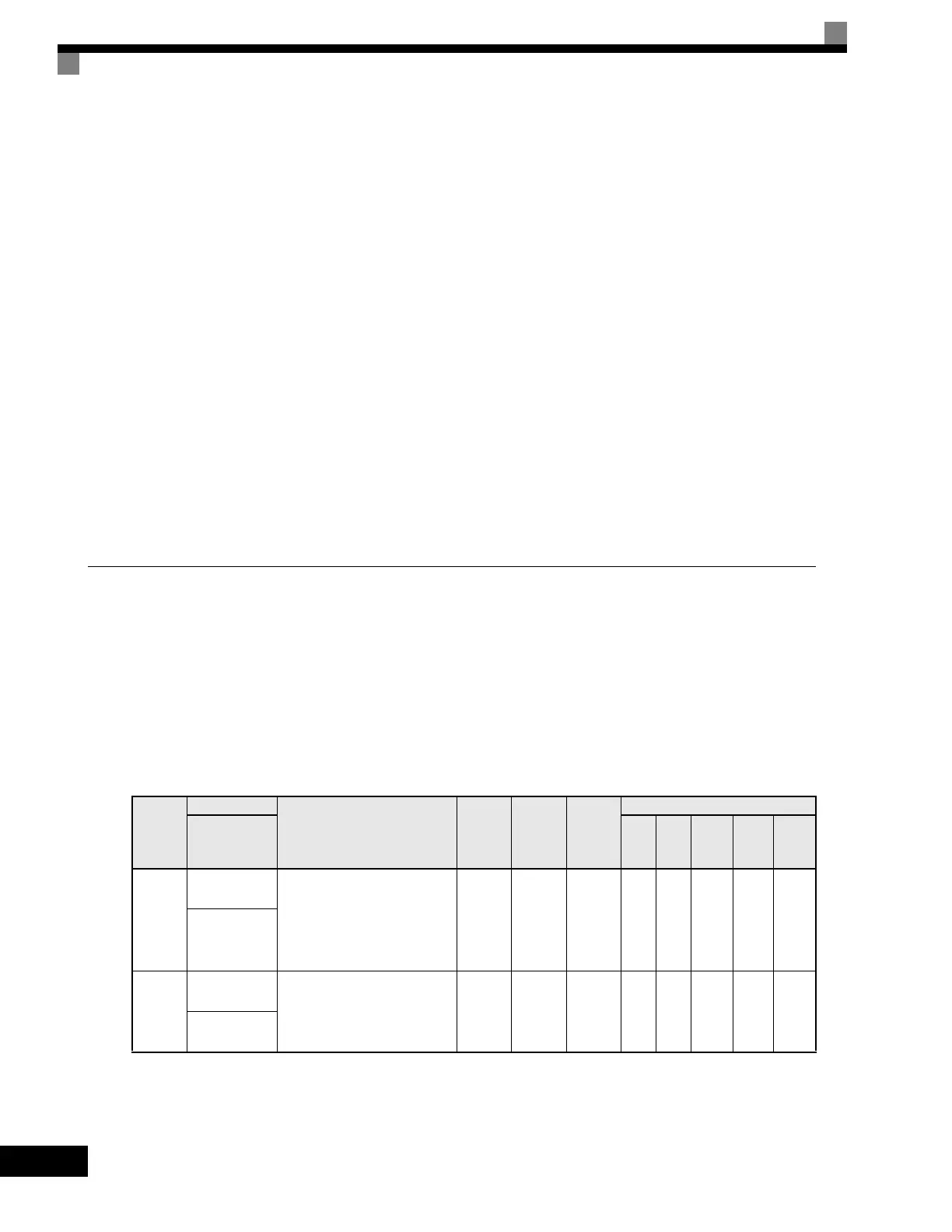